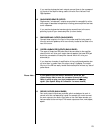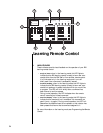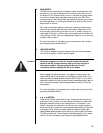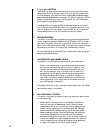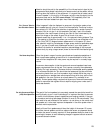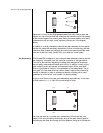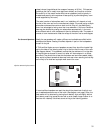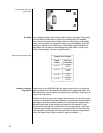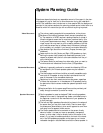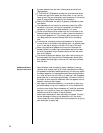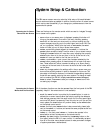
28
Planning Your Installation
The information contained within this section is intended to help get someone
started who wishes to design and install their own sophisticated A/V system built
around the Proceed PAV. However, it cannot be considered a substitute for the ex-
perience, expertise and specialized training of an audio/video installation profes-
sional. (See A Word About Installation, page 9.)
Choosing The Equipment The list of equipment needed for a full home theater system based on the PAV is
fairly straightforward:
• The Proceed PAV
• At least six channels of amplification (Left, Center, Right, two Sur-
rounds, and one or more Subwoofers)
• Additional amplification (with volume control) and loudspeakers if
a remote zone is to be used. (Alternatively, this output may be
used in conjunction with a third-party multi-room system.)
• Left, Center and Right (LCR) front speakers with appropriate stands
or mounting brackets
• One or more subwoofers (required with THX speaker systems;
otherwise optional, but recommended)
• A pair of Surround speakers with appropriate stands or mounting
brackets
• Assorted appropriate interconnecting cables, speaker wires, etc.
Of course, you will also need at least one source and a display system. The best
consumer video sources, in order of quality, are:
• Laserdisc
• Direct Broadcast Satellite link (DBS, DSS)
• a good cable-TV or antenna signal
• Super-VHS tape
• Hi-8 mm videotape
• regular VHS videotape
Planning Your
Equipment Placement
The “light pollution” created by some components can be significant and distract-
ing. Ideally, all equipment should be conveniently located for operation, but any
lights and other indicators should be out of your direct field of vision when
viewing the television picture. The various indicator lights, though essential for
proper operation, can be distracting when listening to music or watching a movie.
While the PAV’s display may be turned off (with the display button on the re-
mote control) to eliminate this problem, other components are unlikely to have
this feature.
Care should also be taken that any mechanical noise created by VCRs, laserdisc
players, etc. does not intrude on the viewing experience. Placing the equipment
behind opaque doors, inside a cabinet addresses both light and noise concerns.
Should this option be chosen, a hard-wired remote IR input is provided on the
PAV’s rear panel to replace the IR input which would normally be received
through the receiver in main display. Alternatively, locating the components well
away from the field of vision can be effective (if mechanical noise from trans-
ports, etc. is not a problem).






